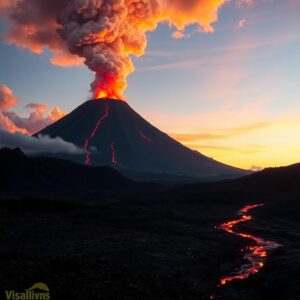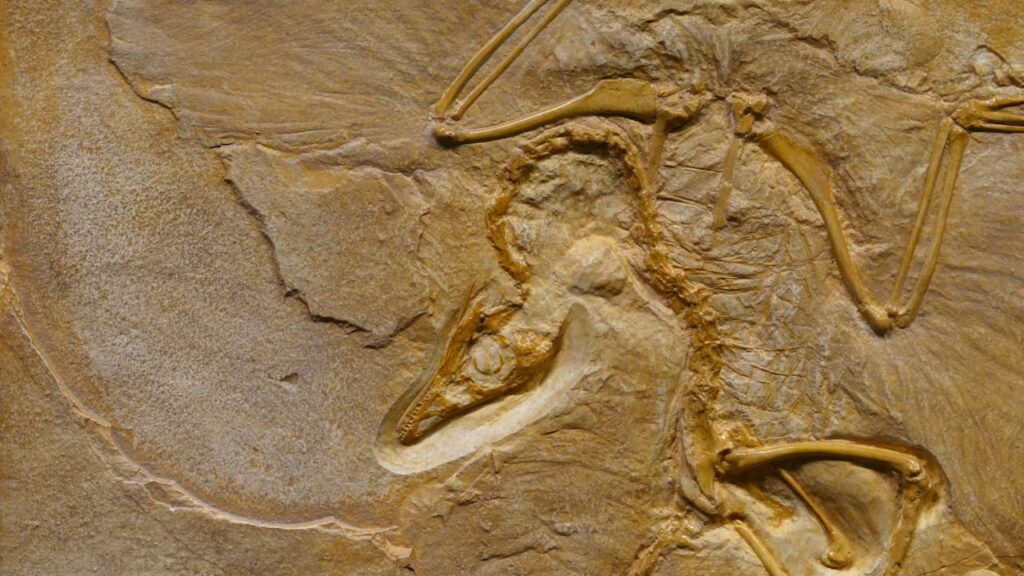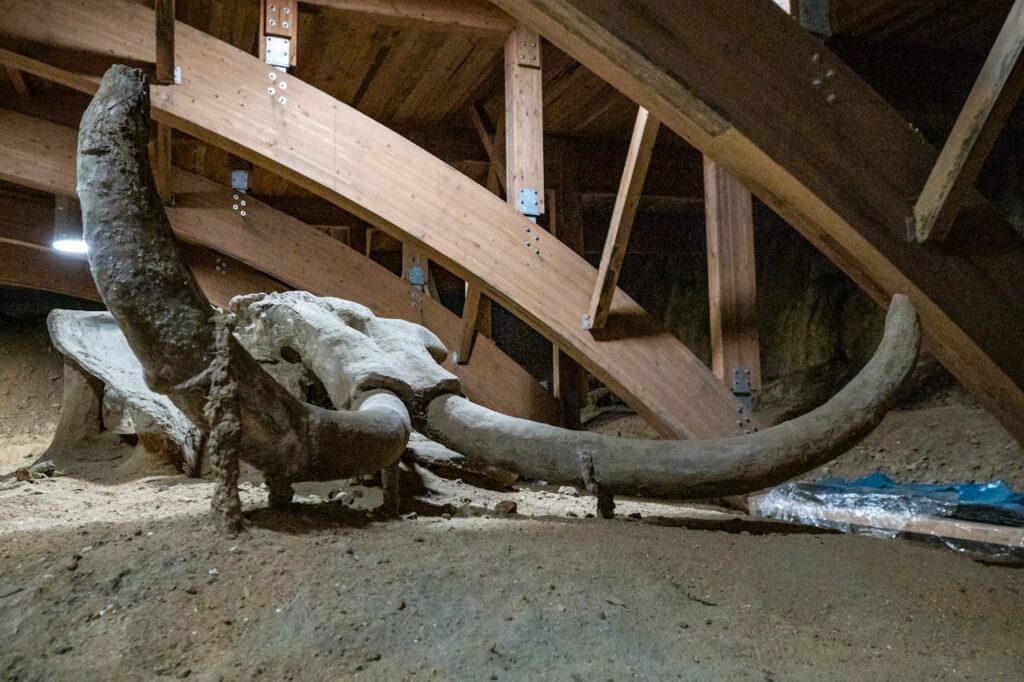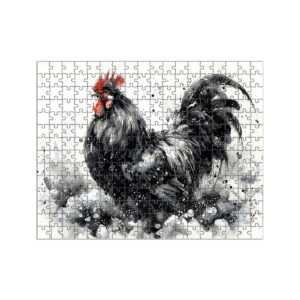
Explore & Play
Discover interesting topics and solve the accompanying crossword puzzle.
Extinct Animals Crossword Puzzle & Fascinating Facts
Table of Contents
Welcome to our exploration of the world of extinct animals! To start, we invite you to dive into our “Extinct Animals Crossword“—a fun and engaging way to test your knowledge about these remarkable creatures. Solving the crossword first can enhance your reading experience, providing you with a playful introduction to the animals we’ll discuss in detail.
If you’re less familiar with the topic or prefer a more structured approach, feel free to read through the article first. This comprehensive guide will give you valuable insights into the extinct species featured in the crossword. Once you’ve familiarized yourself with the content, you can return to the crossword to challenge your newly acquired knowledge.
Whether you choose to solve the crossword before or after reading the article, we hope you enjoy discovering the stories of these magnificent creatures that once roamed our planet.
Extinct Animals Crossword
You can either fill in the crossword puzzle directly on this page or click the button in the bottom right corner to print it for free.

Lost Giants: A Journey Through the Extinction of Prehistoric Megafauna
The story of prehistoric megafauna is both awe-inspiring and cautionary. It reveals the grandeur of ancient creatures that once roamed the Earth and their eventual downfall. This article will delve into the extinction of various prehistoric animals, exploring their unique characteristics, the factors that led to their extinction, and how they are represented in our special crossword puzzle. Whether you solve the crossword first or dive straight into the article, we invite you to explore the fascinating world of these lost giants.
The Era of the Mammoths and Mastodons
Among the most iconic of prehistoric megafauna are the Mammoths and Mastodons, colossal creatures that dominated the Ice Age landscapes.
The Mammoth
The Mammoth, with its towering height and long, curved tusks, roamed the cold expanses of the Ice Age. These majestic creatures were herbivores, feeding on grasses and shrubs. Their thick fur and fat layers were adaptations to the frigid temperatures. Mammoths played a crucial role in their ecosystem, but they were ultimately victims of climate change and human hunting. As the climate warmed and human populations grew, the Mammoth’s habitat dwindled, leading to their extinction around 4,000 years ago. In our crossword puzzle, the Mammoth stands as a testament to Ice Age megafauna.
The Mastodon
The Mastodon, often confused with the Mammoth, was another giant herbivore of the Ice Age. Unlike Mammoths, Mastodons had molar teeth adapted for browsing on leaves and branches. They were widespread in North America and played a significant role in shaping their environment. However, as with Mammoths, climate change and overhunting by early humans contributed to their extinction about 10,000 years ago. The Mastodon’s inclusion in our crossword highlights its importance among Ice Age creatures.


Giants of the Skies: Extinct Birds
Prehistoric skies were once filled with enormous birds, some of which are now just memories in the fossil record.
The Great Auk
The Great Auk was a flightless bird that inhabited the North Atlantic. Standing nearly three feet tall, it was an excellent swimmer but could not fly. Its large size and flightlessness made it vulnerable to human exploitation. By the mid-19th century, excessive hunting led to its extinction. The Great Auk’s presence in our crossword puzzle serves as a reminder of the impact humans have had on even the most majestic birds.
The Elephant Bird
The Elephant Bird, native to Madagascar, was one of the largest flightless birds ever known. With some species reaching up to 10 feet tall, these birds were well-adapted to their environment. However, human arrival in Madagascar and subsequent habitat destruction led to their extinction around 1,000 years ago. The Elephant Bird’s inclusion in our crossword underscores the diverse array of extinct avian giants.
Predators of the Past: The Largest Carnivores
Among the fiercest predators of prehistoric times were the massive carnivores that ruled their domains.
The Sabertooth Cat
The Sabertooth Cat, known for its elongated, curved canine teeth, was a formidable predator of the Ice Age. These cats were adapted to hunt large herbivores like Mammoths and Mastodons. Despite their strength and hunting prowess, environmental changes and prey depletion led to their extinction around 10,000 years ago. The Sabertooth Cat’s inclusion in our crossword reflects its status as one of the most iconic prehistoric predators.
The Haast’s Eagle
Haast’s Eagle, the largest eagle ever known, soared over New Zealand’s forests. With a wingspan of up to 10 feet, it preyed on large birds and mammals. The arrival of humans and the associated extinction of its prey led to the eagle’s decline and eventual extinction around 600 years ago. Haast’s Eagle in our crossword serves as a reminder of the incredible predatory birds that once existed.
Aquatic Giants of the Prehistoric World
The prehistoric oceans were home to some of the largest and most formidable creatures to ever swim the seas.
The Megalodon
The Megalodon, an enormous prehistoric shark, was the apex predator of the oceans around 23 to 3.6 million years ago. With teeth up to 7 inches long and a body estimated to reach 60 feet, the Megalodon dominated marine ecosystems. Its extinction is believed to be linked to climate changes and the decline of its prey species. The Megalodon’s inclusion in our crossword puzzle highlights its dominance as the largest shark ever known.
The Steller’s Sea Cow
The Steller’s Sea Cow, a giant marine mammal, was a close relative of the manatee. It grew up to 30 feet in length and lived along the coast of the North Pacific. Despite its size and slow movement, it was heavily hunted by sailors, leading to its extinction in the 18th century. The Steller’s Sea Cow featured in our crossword reflects the diverse marine life of the prehistoric seas.
Extinct Herbivores: The Gentle Giants
In addition to formidable predators, prehistoric times were home to enormous herbivores that shaped their environments.
The Irish Elk
The Irish Elk, known for its massive antlers, was one of the largest deer species to ever roam the Earth. Its antlers, which could span up to 12 feet, were used in mating displays and combat. The extinction of the Irish Elk around 11,000 years ago is attributed to climate change and habitat loss. The Irish Elk’s inclusion in our crossword highlights the impressive size and adaptability of prehistoric herbivores.
The Woolly Rhinoceros
The Woolly Rhinoceros, with its thick fur and large horns, was well-adapted to the cold climates of the Ice Age. It roamed the steppes of Europe and Asia, feeding on grasses and shrubs. The combination of climate change and human hunting led to its extinction around 10,000 years ago. The Woolly Rhinoceros in our crossword underscores its role as a prominent Ice Age herbivore.
Unique and Lesser-Known Extinct Species
Beyond the well-known giants, several lesser-known extinct species provide intriguing glimpses into prehistoric biodiversity.
The Quagga
The Quagga, a subspecies of the plains zebra, had a unique striped pattern limited to its front half. Native to South Africa, it was hunted to extinction in the late 19th century. The Quagga’s inclusion in our crossword puzzle reflects the diversity and beauty of extinct species.
The Dodo
The Dodo, a flightless bird from Mauritius, became an emblem of extinction due to human activities. Once abundant, the Dodo was driven to extinction in the late 17th century by hunting and introduced species. Its inclusion in our crossword serves as a poignant reminder of the impact of human colonization on isolated ecosystems.
The Impact of Human Activity on Extinction
Human activities have played a significant role in the extinction of many species throughout history.
Hunting and Habitat Destruction
From the overhunting of the Great Auk to the habitat destruction affecting the Elephant Bird, human activities have had profound impacts on various species. The introduction of invasive species and environmental changes further exacerbated these effects. Understanding these impacts helps us appreciate the importance of protecting endangered species today.
Conservation Efforts and Lessons Learned
Learning from past extinctions can guide current conservation efforts. By studying the factors that led to the demise of species like the Passenger Pigeon and the Tasmanian Tiger, we can implement strategies to prevent similar outcomes for today’s endangered species.
The Role of Climate Change in Extinction Events
Climate change has been a critical factor in the extinction of various prehistoric species.
Ice Age Climate Shifts
The transition from the Ice Age to warmer climates significantly affected species like the Mammoth and the Woolly Rhinoceros. As temperatures rose, their habitats changed, leading to resource scarcity and increased competition.
Post-Ice Age Environmental Changes
Following the Ice Age, environmental changes continued to impact species like the Irish Elk and Saber-toothed Cat. The alteration of habitats and ecosystems played a crucial role in their extinction, highlighting the profound effects of climate fluctuations.
The Scientific Study of Extinct Species
Scientific research has provided valuable insights into the lives and extinctions of prehistoric animals.
Fossil Evidence
Fossils offer a window into the past, revealing the physical characteristics and behaviors of extinct species. Through the study of these remains, scientists can reconstruct ancient ecosystems and understand the factors leading to extinction.
Genetic Studies
Genetic studies of extinct species and their relatives help us understand evolutionary processes and the relationships between ancient and modern species. This research can provide clues about the adaptations and vulnerabilities of prehistoric animals.
Reflecting on Extinction and Preservation
Reflecting on the extinction of these prehistoric giants offers valuable lessons for current and future conservation efforts.
As we explore the lives and extinctions of these magnificent creatures, we gain insights into the complex interplay between environmental changes, human activities, and species survival. By understanding the factors that led to the extinction of the Mammoth, Megalodon, and others, we can better appreciate the importance of conserving the species that share our world today. The lessons learned from the past can guide us in our efforts to protect endangered species and preserve biodiversity for future generations.
Share to...
I hope you enjoy the content.
Want to receive our daily crossword puzzle or article? Subscribe!
You may also be interested in
Share to…
Want to receive our daily crossword puzzle?
-
Jigsaw Puzzles
Cat & Sunset Wooden Jigsaw Puzzle 250 | 300 | 500 Pieces
kr 348,00 – kr 439,00Price range: kr 348,00 through kr 439,00 Select options This product has multiple variants. The options may be chosen on the product page -
Jigsaw Puzzles
Zodiac Watercolor Rooster Puzzle: Artful Elegance 250 | 300 | 500 Pieces
kr 348,00 – kr 439,00Price range: kr 348,00 through kr 439,00 Select options This product has multiple variants. The options may be chosen on the product page -
Jigsaw Puzzles
Vigeland Park Fantasy Puzzle 250 | 300 | 500 Pieces
kr 348,00 – kr 439,00Price range: kr 348,00 through kr 439,00 Select options This product has multiple variants. The options may be chosen on the product page

















